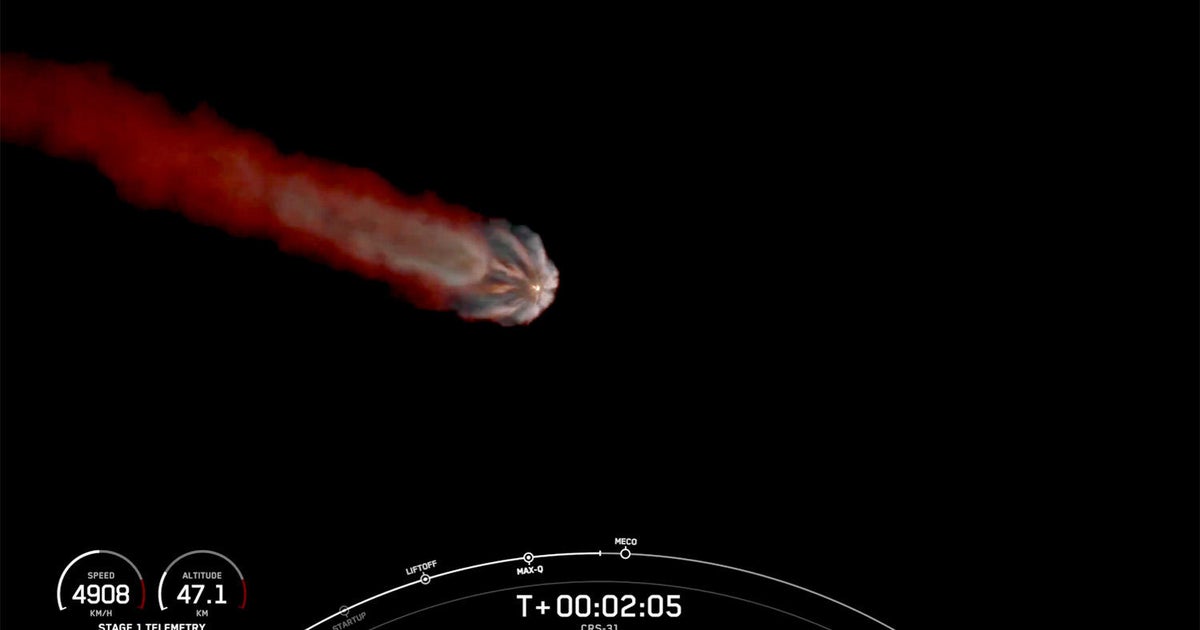CBS News
All the battleground states to watch during the 2024 election

Seven battleground states, which which could potentially swing to either the Democrats or Republicans, hold the keys to the presidency in the 2024 election as voters make their choice between former President Donald Trump and Vice President Kamala Harris.
Both Harris and Trump have made repeated visits to these competitive states, where CBS News polling shows the candidates were virtually tied in the lead-up to Election Day.
List of battleground states to watch in the 2024 presidential election
CBS News considers these the battleground states in the 2024 presidential election:
- Arizona
- Georgia
- Michigan
- Nevada
- North Carolina
- Pennsylvania
- Wisconsin
Arizona has 11 electoral votes, and its polls close at 9 p.m. ET on Election Day. Trump won Arizona in 2016, but then lost it narrowly to President Biden in 2020.
Georgia has 16 electoral votes, and the polls close at 7 p.m. ET. Trump won the state in 2016, but in 2020, Mr. Biden beat him by fewer than 12,000 votes — the first time a Democratic candidate had won the state since Bill Clinton in 1992. Allegations that Trump and more than a dozen allies engaged in a criminal conspiracy to overturn Georgia’s 2020 results are now at the center of an election interference case in Fulton County; Trump denies wrongdoing.
Michigan’s 15 electoral votes went to Trump in 2016 after almost three decades of supporting Democrats for president. The state flipped in 2020, with Mr. Biden taking the win. Michigan is part of the so-called “blue wall” of Midwestern states considered crucial for Democrats. Rep. Debbie Dingell recently said she believes her state will remain competitive until the last vote is counted on Election Day. The first polls in Michigan close at 8 p.m. ET, but some are in a different time zone and close at 9 p.m. ET.
Nevada has voted Democratic for the past four presidential elections. With six electoral votes, Nevada has the smallest total of the seven presidential battleground states. Polls close in the state at 10 p.m. ET.
North Carolina is still dealing with the devastating aftermath of Hurricane Helene. Both candidates have visited since the storm. Democrats have won the state’s 16 electoral votes only twice since 1968, most recently in 2008 when voters backed Barack Obama. Trump edged out Mr. Biden in the state in 2020 by a little more than 1 point, and also bested Hillary Clinton in the state in 2016. Polls in North Carolina close at 7:30 p.m. ET.
Pennsylvania, with its 19 electoral votes, is a critical battleground for Harris and Trump. Mr. Biden took the state in 2020, while Trump won there in 2016. Harris and Trump have visited the state at least 20 times each in the months leading up to the election. Polls in Pennsylvania close at 8 p.m. ET.
Wisconsin voters backed Democrats for decades until 2016, when Trump flipped the state and secured its 10 electoral votes. Voters swung back in 2020, when Mr. Biden won the state. The state was decided by less than 1% in the last two elections. Polls in Wisconsin close at 9 p.m. ET.
The latest polling from battleground states
CBS News’ Battleground Tracker provides the latest estimates of support for Harris and Trump in these states as the 2024 campaign comes to a close. Estimates are based on CBS News/YouGov polling and analysis.
The findings below also include Nebraska’s competitive 2nd Congressional District; Nebraska is one of two states, along with Maine, that allows splitting up its electoral votes.
What is a battleground state, technically?
A battleground state — sometimes known as a swing state — has a population of voters who are almost evenly divided politically heading into the election. While many states vote fairly consistently for either Democrats or Republicans, both parties see a chance to win in the battlegrounds and invest a huge amount of money and time into campaigning in these states.
How have battleground states shifted over the years?
Here’s who voters in battleground states backed in past elections:
Arizona:
- 2020: Joe Biden (Democrat)
- 2016: Donald Trump (Republican)
- 2012: Mitt Romney (Republican)
- 2008: John McCain (Republican)
- 2004: George W. Bush (Republican)
- 2000: George W. Bush (Republican)
Georgia:
- 2020: Joe Biden (Democrat)
- 2016: Donald Trump (Republican)
- 2012: Mitt Romney (Republican)
- 2008: John McCain (Republican)
- 2004: George W. Bush (Republican)
- 2000: George W. Bush (Republican)
Michigan:
- 2020: Joe Biden (Democrat)
- 2016: Donald Trump (Republican)
- 2012: Barack Obama (Democrat)
- 2008: Barack Obama (Democrat)
- 2004: John Kerry (Democrat)
- 2000: Al Gore (Democrat)
Nevada:
- 2020: Joe Biden (Democrat)
- 2016: Hillary Clinton (Democrat)
- 2012: Barack Obama (Democrat)
- 2008: Barack Obama (Democrat)
- 2004: George W. Bush (Republican)
- 2000: George W. Bush (Republican)
North Carolina:
- 2020: Donald Trump (Republican)
- 2016: Donald Trump (Republican)
- 2012: Mitt Romney (Republican)
- 2008: Barack Obama (Democrat)
- 2004: George W. Bush (Republican)
- 2000: George W. Bush (Republican)
Pennsylvania:
- 2020: Joe Biden (Democrat)
- 2016: Donald Trump (Republican)
- 2012: Barack Obama (Democrat)
- 2008: Barack Obama (Democrat)
- 2004: John Kerry (Democrat)
- 2000: Al Gore (Democrat)
Wisconsin:
- 2020: Joe Biden (Democrat)
- 2016: Donald Trump (Republican)
- 2012: Barack Obama (Democrat)
- 2008: Barack Obama (Democrat)
- 2004: John Kerry (Democrat)
- 2000: Al Gore (Democrat)
CBS News
11/4: The Daily Report – CBS News

Watch CBS News
Be the first to know
Get browser notifications for breaking news, live events, and exclusive reporting.
CBS News
11/4: America Decides – CBS News

Watch CBS News
Be the first to know
Get browser notifications for breaking news, live events, and exclusive reporting.
CBS News
Cargo ship launched to space station with supplies, science gear and holiday treats for crew

SpaceX launched an unpiloted Dragon cargo ship Monday evening, an election eve flight to deliver three tons of crew supplies, science gear and other equipment to the International Space Station, including an unusual wooden satellite, a solar wind monitor and holiday fare for the lab’s crew.
The Dragon’s Falcon 9 rocket blasted off from historic launch pad 39A at the Kennedy Space Center at 9:29 p.m. EST, lighting up the night sky for miles around as it climbed away atop 1.7 million pounds of thrust.
NASA/SpaceX
After boosting the rocket out of the dense lower atmosphere, the first stage, making its fifth flight, peeled away, reversed course and headed back to an on-target landing at the Cape Canaveral Space Force Station while the second stage continued the climb to space.
The landing marked SpaceX’s 57th successful booster recovery at the Florida Space Force station and its 363rd overall, including California flights and droneship landings.
Spaceflight Now
Just under 10 minutes after liftoff, the vacuum-optimized engine powering the Falcon 9’s second stage shut down and one minute later, the Dragon was released to fly on its own. If all goes well, it will catch up with the space station Tuesday morning and move in for docking at the lab’s forward port at 10:15 a.m.
One of the first items on the agenda is a test Friday to determine the Cargo Dragon’s ability to boost the space station’s orbit slightly using its aft-facing thrusters. The ISS is routinely re-boosted by Russian Progress freighters and Northrop Grumman Cygnus cargo ships, but Friday’s test will be a first for SpaceX.
The California rocket builder is under contract to NASA to build a powerful space tug of sorts that can be used to safely drive the ISS back into the atmosphere when the lab complex is retired in the 2030 timeframe. The vehicle is needed to make sure the station breaks up over a stretch of ocean well away from populated areas and shipping lanes.
During the test Friday, the Cargo Dragon’s aft thrusters will fire for about 12 minutes.
“The data that we’re going to collect from this reboost and attitude control demonstration will be very helpful, informing SpaceX analyses on how the system performs,” said Jared Metter, SpaceX director of flight reliability. “This data is going to lead to future capabilities, namely the US de-orbit vehicle.”
Reboost aside, the Cargo Dragon is loaded with slightly more than 6,000 pounds of equipment and supplies, including 2,022 pounds of science gear, 2,119 pounds of crew clothing, food and other supplies, 377 pounds of spacewalk equipment, 525 pounds of space station hardware and 44 pounds of computer equipment.
One of the more unusual payloads: Lignosat, a small wooden satellite using a framework of magnolia panels built by researchers at Kyoto University in Japan and the Tokyo-based logging company Sumitomo.
STR/JIJI PRESS / AFP via Getty Images
“While some of you might think that wood in space seems a little counterintuitive, researchers hope that this investigation demonstrates that a wooden satellite can be more sustainable and less polluting for the environment than conventional satellites,” said Meghan Everett, the ISS deputy project scientist.
“The main objective here is to determine whether wood can be used in space, and to do this, researchers will measure the temperature and strain of the wooden structure and see how it might change in the vacuum environment of space with atomic oxygen and radiation conditions as well.”
As with all station-bound Dragon cargo ships, the crew supplies include fresh food and special treats for holiday meals.
Bill Spetch, ISS operations and integration manager, said the “food kit” includes “citrus, apples, sweet onions, blueberries, radishes, etc,” along with lobster, crab and quail for holiday meals. A variety of cheeses is on board as well as fresh coffee and personal items requested by each crew member.
Mounted in the Dragon’s unpressurized trunk section is the Coronal Diagnostic Experiment, or CODEX, an instrument that will be mounted outside the space station to learn more about how charged particles in the solar wind are heated to millions of degrees and accelerated to enormous velocities, affecting Earth’s space environment and the rest of the solar system.
Inside the station, the astronauts will have a variety of new experiments and instruments to operate and monitor, including one called ARTEMOSS that will examine how Antarctic moss tolerates the space radiation and microgravity environment to learn more about how plants might be used in future life support systems.
The European Space Agency is sending up a space exposure experiment to learn more about how high-tech materials respond to prolonged exposure to the weightless environment and another experiment to study how organic samples degrade when exposed to unfiltered ultraviolet light from the sun.
And in an experiment that could be particularly useful to future astronauts, a small device known as Nanolab Astrobeat, provided by the Malta College of Arts, Science and Technology, will test cold welding technology that could prove useful for repairing leaks or other damage from inside a spacecraft.
The Cargo Dragon is expected to remain docked at the space station for about a month before it returns to Earth with station components needing refurbishment, trash and other no-longer-needed items.











